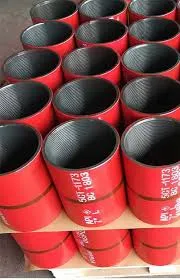- Afrikaans
- Albanian
- Amharic
- Arabic
- Armenian
- Azerbaijani
- Basque
- Belarusian
- Bengali
- Bosnian
- Bulgarian
- Catalan
- Cebuano
- Corsican
- Croatian
- Czech
- Danish
- Dutch
- English
- Esperanto
- Estonian
- Finnish
- French
- Frisian
- Galician
- Georgian
- German
- Greek
- Gujarati
- Haitian Creole
- hausa
- hawaiian
- Hebrew
- Hindi
- Miao
- Hungarian
- Icelandic
- igbo
- Indonesian
- irish
- Italian
- Japanese
- Javanese
- Kannada
- kazakh
- Khmer
- Rwandese
- Korean
- Kurdish
- Kyrgyz
- Lao
- Latin
- Latvian
- Lithuanian
- Luxembourgish
- Macedonian
- Malgashi
- Malay
- Malayalam
- Maltese
- Maori
- Marathi
- Mongolian
- Myanmar
- Nepali
- Norwegian
- Norwegian
- Occitan
- Pashto
- Persian
- Polish
- Portuguese
- Punjabi
- Romanian
- Russian
- Samoan
- Scottish Gaelic
- Serbian
- Sesotho
- Shona
- Sindhi
- Sinhala
- Slovak
- Slovenian
- Somali
- Spanish
- Sundanese
- Swahili
- Swedish
- Tagalog
- Tajik
- Tamil
- Tatar
- Telugu
- Thai
- Turkish
- Turkmen
- Ukrainian
- Urdu
- Uighur
- Uzbek
- Vietnamese
- Welsh
- Bantu
- Yiddish
- Yoruba
- Zulu
api tubing couplings
API Tubing Couplings An Overview
The oil and gas industry relies heavily on various components to ensure the smooth operation of its drilling and extraction processes. Among these components, API tubing couplings play a crucial role in maintaining the integrity and safety of wellbore operations. This article will delve into the significance of API tubing couplings, their specifications, types, and best practices for their use in drilling applications.
What are API Tubing Couplings?
API tubing couplings are fittings used to connect sections of tubing in oil and gas wells. The term API refers to the American Petroleum Institute, which sets the industry standards for these couplings. These are typically made of high-strength steel and are designed to withstand the extreme pressures and temperatures found in subsurface environments. Proper use of these couplings is vital, as they ensure that the tubing strings are effectively sealed, preventing leaks and maintaining pressure within the system.
Importance of API Specifications
The API has established specific guidelines and standards for tubing couplings, which are critical for ensuring reliability and safety. The most relevant API specifications for tubing couplings include API Spec 5B and API Spec 5CT.
- API Spec 5B outlines the requirements for the inspection, measurement, and marking of couplings. It emphasizes the need for precision in manufacturing to ensure fit and performance. - API Spec 5CT provides the specifications for the steel pipe used in casing and tubing, addressing factors such as chemical composition, mechanical properties, and dimensions.
Adhering to these specifications ensures that the couplings can tolerate the harsh conditions of oil and gas extraction. Operators must select couplings that meet or exceed these standards to avoid failures that could lead to costly downtime and safety hazards.
Types of API Tubing Couplings
Tubing couplings come in various types, each suited for different applications
. The most commonly used types include1. Regular Couplings (RC) These are standard couplings used to connect pipes of the same diameter. They provide a robust connection for general applications.
api tubing couplings

2. Short Couplings (SC) These couplings are designed for applications where space is limited. They are shorter in length compared to regular couplings, helping to minimize the risk of buckling in confined spaces.
3. Long Couplings (LC) Used when greater length is required, these couplings provide added strength and stability to the connection.
4. Specialty Couplings Some applications may require couplings designed for specific conditions, such as high-pressure situations or corrosive environments. These specialized couplings may feature unique designs or materials to enhance performance.
Best Practices for Using API Tubing Couplings
Achieving optimal performance from API tubing couplings involves following best practices in their selection, installation, and maintenance
- Proper Selection Always choose couplings that are compatible with the tubing and well conditions. Consider factors such as the operational environment, pressure ratings, and material properties.
- Adequate Installation Ensure that couplings are installed according to manufacturer specifications. This includes proper threading and torque specifications to prevent leaks and ensure a secure fit.
- Regular Inspection Conduct routine inspections of tubing couplings to identify signs of wear, corrosion, or damage. Early detection of issues can prevent costly failures and enhance the lifespan of the system.
- Adhering to Standards Follow API guidelines and industry standards when selecting and using tubing couplings. Compliance with these standards ensures that couplings are reliable and suitable for their intended application.
Conclusion
API tubing couplings are essential components in the oil and gas industry, providing secure connections between tubing sections and ensuring the safety and efficiency of drilling operations. Understanding the specifications, types, and best practices associated with these couplings can help operators mitigate risks and enhance the overall performance of their systems. By carefully selecting and maintaining API tubing couplings, industry professionals can contribute to the success of oil and gas projects while ensuring the safety of personnel and the environment.
-
Tubing Pup Joints: Essential Components for Oil and Gas OperationsNewsJul.10,2025
-
Pup Joints: Essential Components for Reliable Drilling OperationsNewsJul.10,2025
-
Pipe Couplings: Connecting Your World EfficientlyNewsJul.10,2025
-
Mastering Oilfield Operations with Quality Tubing and CasingNewsJul.10,2025
-
High-Quality Casing Couplings for Every NeedNewsJul.10,2025
-
Boost Your Drilling Efficiency with Premium Crossover Tools & Seating NipplesNewsJul.10,2025







